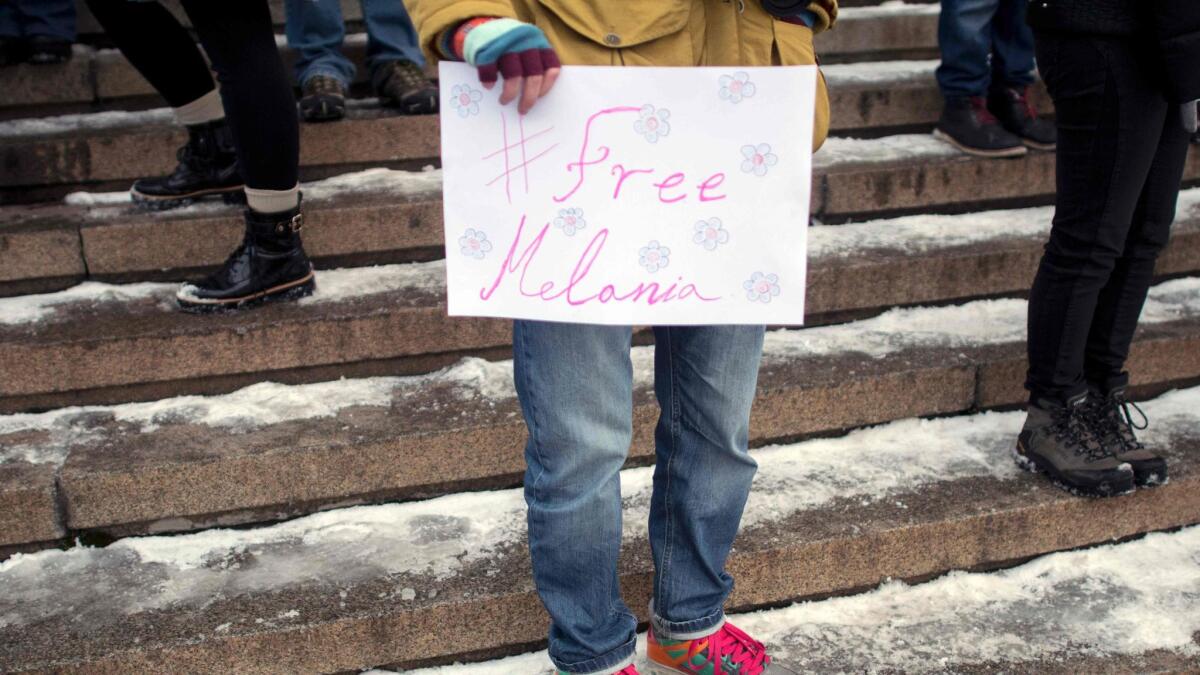Op-Ed: It’s not just Trump supporters who spread fake news. Liberals do it too

- Share via
Last fall, as Native American protesters gathered at Standing Rock to stop the completion of the Dakota Access Pipeline, several of my friends “checked in” at the protest on Facebook. They were nowhere near North Dakota. They had heard — through urgent posts by other friends who were not present, either — that fake geo-tagging would protect protesters at the site from monitoring by law enforcement. NPR reported that more than a million people “checked in” at the protest camp, a digital version of the “I am Spartacus” strategy.
But the local Sheriff’s office told reporters that it hadn’t been monitoring protesters using Facebook geo-tags. And leaders of the protest said they had never asked far-flung allies to change their locations on social media.
For the record:
9:46 a.m. Jan. 19, 2025This article originally said that the Standing Rock protest camp was in South Dakota. It is in North Dakota.
The geo-tagging fad was a harmless way for people to express solidarity with the protesters. It was also, arguably, part of a bigger problem with how information spreads online in the Trump era.
Fake news, as defined by the Columbia Journalism Review, is “misinformation crafted to influence public opinion or cull digital advertising dollars.” When researchers from Stanford and New York University analyzed misinformation that spread on social media during the 2016 election, they found that more fake news articles were pro-Trump than pro-Clinton.
Despite liberals’ self-perception that we are more fact-oriented than your average Trump supporter, this is not a weakness limited to the right.
But in the months since the election, President Trump has made “fake news” his primary critique of any unfavorable coverage. The president applies the label to everything from independent polls finding scant support for his policies to leaked reports that his administration is in disarray.
If the term has been rendered meaningless, the underlying notion still holds up: People are too quick to share articles that confirm their beliefs. (In December, a Pew study found that 23% of U.S. adults had shared a made-up news story, either knowingly or not.) And despite liberals’ self-perception that we are more fact-oriented than your average Trump supporter, this is not a weakness limited to the right.
To spread misinformation, you don’t have to share a post with a clicky headline from a dubious source. Sometimes all you have to do is take a funny meme a bit too seriously. Take, for example, a well-circulated animated GIF of Melania Trump during the inauguration ceremony. The clip shows her smiling while her husband is facing her, then dropping the smile as soon as he turns away. For those of us who want to believe that even those closest to the president secretly hate him, the GIF was a balm. “This Melania Trump GIF is all of us,” crowed Cosmopolitan. Melania’s perceived unhappiness became one of the more popular liberal memes of the week, with captions like, “Blink twice if you want us to save you.”
The joke faded faster than Melania’s smile when advocates for survivors of abuse published blog posts imploring us to take seriously the suggestion that domestic violence might be an issue in the White House. The blog Queerty claimed it had found “another candid video of Donald Trump treating Melania like crap.” An online joke had become a pretty serious story — and allegation — with scant evidence to back it up.
A few sites, including Mediaite, posted the inauguration footage in full, which placed the short viral clip in context. It appears the smile drops quickly from Melania’s face because the GIF was captured during a prayer—not exactly a moment for joking around on the dais. But the corrective was lost in a deluge of memes. No one shared it in my feed. I only found it because I went looking for it.
Was the Melania smiling meme fake news? Probably not as most on the left would define it, because no one intended to mislead the public or drive clicks to a single website. But political wishful thinking carried the story past the point of absurdity.
Memes aren’t the only unlikely way that alternative facts circulate in liberal circles. Like our counterparts on the right, those of us on the left don’t always trust established journalistic institutions to cover certain issues thoroughly — especially when it comes to marginalized people who aren’t likely to be perceived as advertisers or subscribers. Groups including Native American activists, transgender teens and immigrants in the country illegally have long relied heavily on word of mouth for information.
When immigration officers stepped up enforcement efforts, resulting in raids across the country, gossip spread across social media faster than journalists were able to confirm or debunk it. “Reports of ICE #raids and #checkpoints NEED TO COME WITH PICTURES OR FACEBOOK LIVE,” tweeted Fusion immigration reporter Jorge Rivas. “Rumors are spreading and it’s causing even more anxiety.”
The root cause of left-wing rumor-mongering is fairly obvious. When the front-page headlines sound like conspiracy theories and plotlines from “House of Cards,” it’s easy to conflate unsourced rants on blogs and in public forums with reported facts. Cognitive scientists have found that it’s much harder for us to skeptically assess stories that confirm our beliefs rather than challenge our view of the world.
Fake news isn’t just a problem that afflicts others. The burden falls on all of us to read news items critically before we share them — no matter what our political persuasion or how pure our intentions.
Ann Friedman is a contributing writer to Opinion. She lives in Los Angeles.
Follow the Opinion section on Twitter @latimesopinion or Facebook
More to Read
A cure for the common opinion
Get thought-provoking perspectives with our weekly newsletter.
You may occasionally receive promotional content from the Los Angeles Times.










